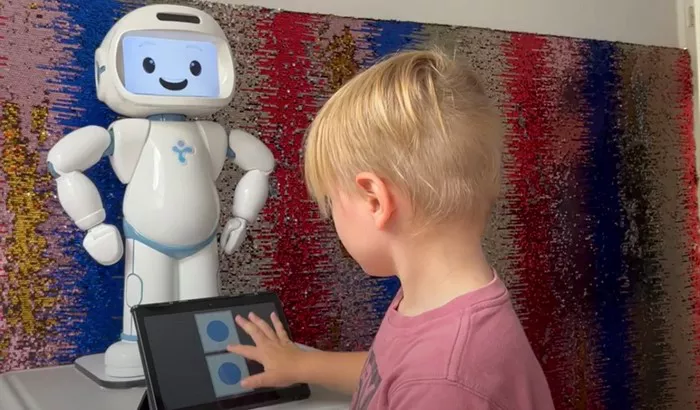A recent study published in the Journal of Autism and Developmental Disorders reveals that a robot-assisted therapeutic program significantly improves social development and engagement in children with autism spectrum disorder (ASD). The findings show that children who participated in the robotic intervention demonstrated better communication and reciprocal social interaction compared to those receiving human-led therapy or no intervention at all.
ASD is a neurodevelopmental condition marked by challenges in social communication and repetitive behaviors, with symptoms typically emerging in early childhood. The spectrum varies widely—from individuals with intellectual and language impairments to those with average or above-average intelligence. Sensory sensitivities and difficulties in interpreting social cues often complicate social interactions for children with ASD.
Early intervention is crucial for better outcomes, and previous research suggested some children with ASD respond more positively to robots than humans. Building on this insight, researchers led by Eva Yin-han Chung conducted a randomized controlled trial to evaluate the effectiveness of a robotic therapy program in enhancing social engagement—a key factor enabling children to participate in meaningful social interactions.
The study involved 60 children aged 5 to 11 with ASD, all with an IQ above 70 and the ability to follow simple commands. Participants were divided into three groups: a robotic intervention group, a human-instructed therapy group, and a control group without intervention. The robotic group engaged with the humanoid NAO robot, which helped therapists deliver sessions focusing on two-way communication, emotions, imitation, and reciprocal responses through games, stories, singing, and dancing over 12 weeks.
NAO’s child-sized, approachable design—with multicolored blinking eyes—helped engage the young participants effectively. Both the robotic and human-led groups followed the same program content, while the control group did not receive any treatment during the study period.
Assessments before and after the program using the Autism Diagnostic Observation Schedule (ADOS) and the Social Responsiveness Scale (SRS) revealed that the robotic intervention group made the most significant gains in social communication. Improvements were especially notable in reciprocal social interaction. Parent reports also confirmed enhanced social responsiveness in both intervention groups compared to controls, though differences between robotic and human-led therapy were less pronounced on this measure.
“The effectiveness of the robotic intervention program to enhance social communication and participation was confirmed,” the authors concluded, while recommending future research to include longer-term follow-up to determine the durability of these benefits.
Despite its promising results, the study’s limitations include a relatively small sample size and the lack of data on long-term effects. Further studies are needed to explore how robotic therapy outcomes translate to real-world social settings beyond clinical environments.
The study, titled “Effectiveness of Robotic Intervention on Improving Social Development and Participation of Children with Autism Spectrum Disorder – A Randomised Controlled Trial,” was conducted by Eva Yin-han Chung, Kenneth Kuen-fung Sin, and Daniel Hung-kay Chow.
Related topics:

